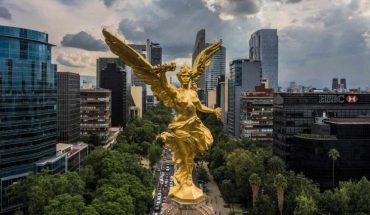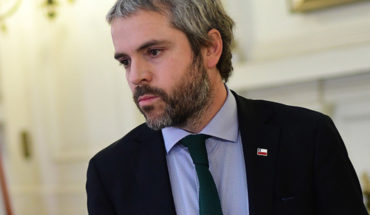This recently published essay discusses the possibility of computers being able to create works of art. Its author, Aaron Hertzmann, is a scientist who belongs to the research division of Adobe and one of the most recognized personalities in the area of graphic computing. But… can the algorithms really replace the artists? ” From today the painting is dead! ”
This was said by Paul Delaroche, a renowned French painter, leaving a demonstration of daguerreotypes in 1839. It happens that before the invention of photography, the only realistic images in the world were those produced by artists. Imagine how special and unique it should feel to have the rare opportunity to be in front of a painting executed with mastery, or, better yet, be able to paint it. In 2019, the millions of people who have a smartphone we have the possibility to capture and edit as many photos as we want, but until the time of Delaroche, the portraits were a thing of aristocrats. Only those with enough money to hire artists who immortalized them on a canvas could access the privilege of a portrait.
During the NINETEENTH century, silhouettes offered a quick and cheap alternative to traditional portraiture.
Daguerreotype of the then Plaza de la Victoria, with the pyramid of May and the Cathedral of Buenos Aires (1854).
As whenever a technology breaks into art, the question of whether photography could be regarded as an artistic product soon appeared. While some argued that the new medium of expression served as a support and reference to painting, other artists saw it as a threat and possible source of unemployment, since painting portraits had become a common way of sustenance for many artists Street. For centuries, painters had been perfecting themselves to represent reality. The technical skills for realism were inseparable from other creative aspects. The emergence of photography put this demand in crisis: if photorealism could be reduced to a mechanical process, what was the role of the artist then? This question prompted many to escape realism. For example, the emergence of the Impressionist and Post-Impressionist movements had as a motor the search for new ways of representing the real that were not limited to the exact copy. In this regard, Vincent Van Gogh said to his brother, in a letter of 1888: “You must boldly exaggerate the harmony or discord that produce the colors. It is the same in the drawing: precision or exact color may not be the essential, because the reflection of reality in a mirror […] It would be but a photograph. ”
Starry Night, by Van Gogh.
This brief history teaches us a strong lesson. At first, photography (like AI) was not considered an art form by the fact of consisting of a mechanical process. However, some artists clung to the new technology and explored its potential, giving rise to more than a century of photographic art and even to the emergence of new forms of artistic expression, such as cinema. At the same time that the new technology democratized the capture of images, it revitalized other traditional means like painting, pushing it towards more abstract forms of expression. Artificial intelligence that’s not smart
DeepDreams is a program designed by Alexander Mordvintsev (Google) that detects patterns in images and highlights them using a perceptual phenomenon called pareidolia.
Recently, advances in computational synthesis of images do not stop surprising us. More than three decades of research in graphic computing have left us a varied palette of tools that generate amazing images. In the news, these algorithms are presented regularly with almost human qualities, as if they possessed conscience or intent, even soul. These anthropomorphicic compareds don’t do anything right to IA. While many algorithms consist of complex automations, those who program them can explain in detail why they work and the intuition behind the artistic process they embody. They are something like the mathematical model of an artistic representation. These algorithms are far from being a replica of human consciousness, something that even science cannot yet explain or define accurately. AI algorithms, even those that offer more impressive results, are procedures for approximating data. Something similar to what we do when we join points with a curve, but in a much more sophisticated and multi-dimensional space. When researchers use words like “training,” or we talk about “learning algorithms,” we do it in a very different sense from human learning. Training an IA model always involves the effort of people to formulate the problem, collect and cure the data, and even try different formulations. New tools, the same fears
Like the panic that painters suffered before the first daguerreotype, today is also palpable concern that technology will make some work disappear. This fear is recurrent and goes back to the times of the first industrial revolution. But despite being immersed in a context where technological breakthroughs occur with a frequency never recorded in history, we do not live in a world of mass unemployment. Concern reappears to every technological milestone because it is always easier to imagine the loss of specific jobs than to anticipate the new opportunities that these technologies will create. Just imagine having to explain to a NINETEENTH-century worker The work we do today… What we should really be concerned about is whether the economy will equitably distribute the gains from automatic learning technologies, or whether the IA would contribute to the increase in global inequality, by concentrating even more on wealth in the hands Of a handful of people. Some human tasks are likely to disappear, but they will be linked to mechanical processes that do not require too much creativity. What’s artificial intelligence?
Compared to human intelligence, AI’s algorithms are fragile and extremely superficial. It is true that they are sophisticated tools that we are not accustomed to, so many of their results surprise us. It is also true that we can establish some similarities between automatic and human learning. However, we cannot consider them a true Artificial intelligence because there are always people behind each work.
Granting the author rank to an algorithm is comparable to giving it authorship of a book to the word processor with which it was written. Art requires human intent, a desire to express oneself. In the same way that we do not consider nature as an artist, despite the beauty of a landscape or the plumage of a pheasant, we cannot consider an AI algorithm that is not an autonomous creator nor will it be in any foreseeable near scenario. Algorithms for generating artistic content are a tool. As with photography, early adopters will be able to lead the creation of new forms of expression and styles that we still cannot even imagine. At the same time, those who do not have the necessary artistic skills, we will have access to new and simplified ways to express ourselves. * He is researcher at CONICET-UTN FRBA in the area of computer graphics, PhD in computer Science from the Université de Nice-Sophia Antipolis (France). He participates regularly in research projects that combine digital techniques for image manipulation and the creation of interactive content. On Twitter: @emmaiarussi. More in: http://emmanueliarussi.com/.





